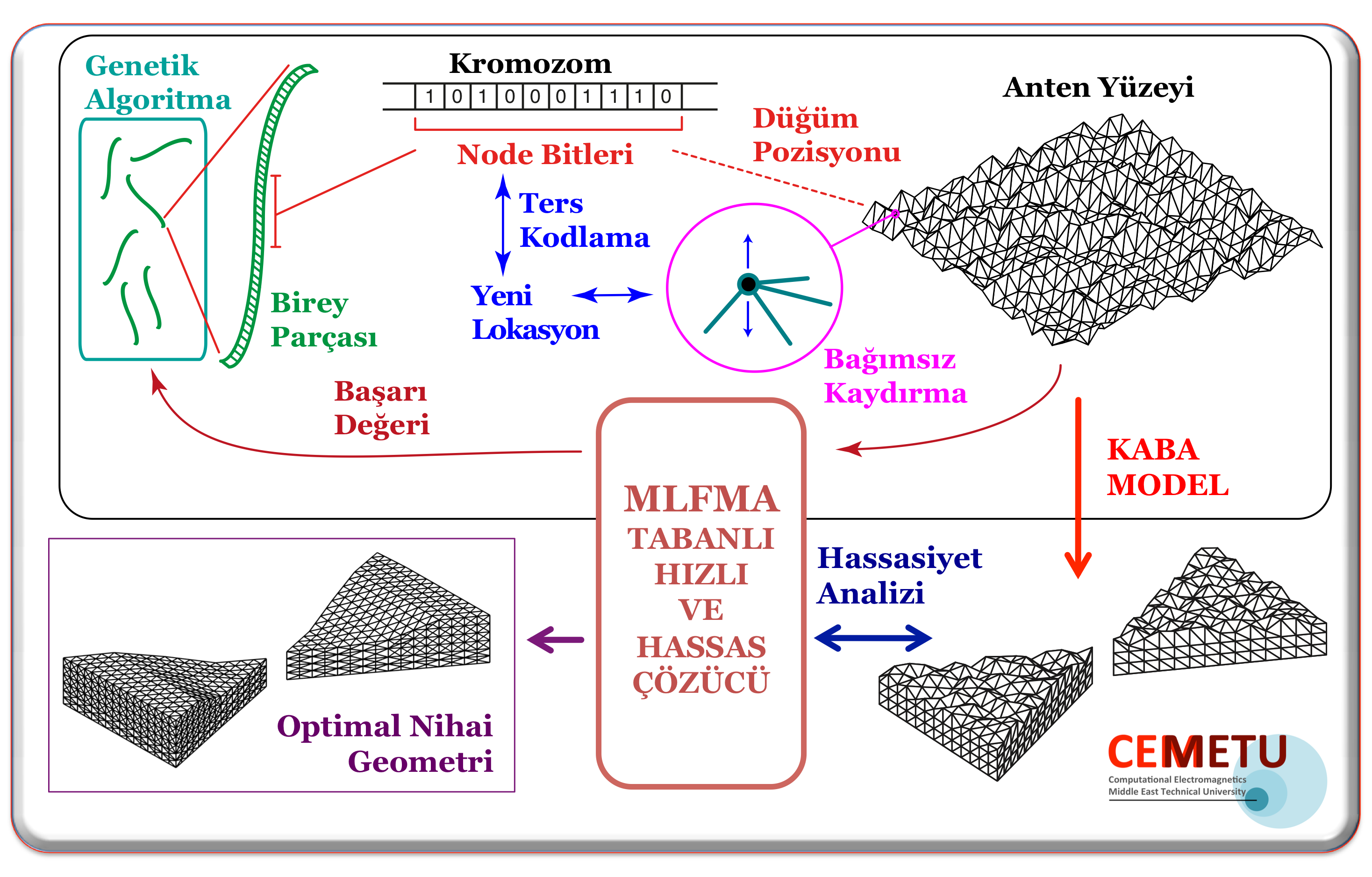Project Coordinator: Assoc. Prof. Dr. Özgür Ergül
Project Type: TUBITAK 1001 Scientific and Technological Research Projects Funding Program
Project Duration: 30 Months
Project Start Date: 15 October 2018
Funded Personnel: 2 PhD Students (full-time), 3 MSc Student (full-time)

As opposed to the antennas used at radio and microwave frequencies, nanoantennas can be described, in terms of working principles, as small antennas that operate at THz and optical frequencies. In this perspective, a nanoantenna that operates as a receiver can gather electromagnetic waves at optical frequencies and direct to its terminals, enabling optical energy harvesting. When a nanoantenna operates as a transmitter, it makes it possible to detect particles in its terminal. This enables the detection of low-density but critical chemical substances that are used in biology and chemistry. In order to design nanoantennas that may have thousands of different geometries, their very accurate electromagnetic simulations are needed. However, due to the accuracy and efficiency issues of the solvers and software in the literature, complex nanoantenna structures cannot be modeled as in real life, leading to poor performances of the fabricated samples. In this project, an electromagnetic solver and optimization mechanism based on the direct application of the Maxwell’s equations without approximation, which can perform accurate, efficient, and fast solutions of complex nanoantenna problems, will be developed and used to obtain superior nanoantenna designs for diverse applications.
